An Alternative RF Navigation Simulator Debuts From Spirent Federal Systems
Spirent Federal has launched an alternative RF navigation simulator. As GPS jamming and spoofing continue to rise, interest in complementary sources of positioning, navigation, and timing (PNT) data has likewise increased.

Recent government directives recommend a layered, multi-source approach, with much of the attention focused on non-GNSS radio frequency signals. These RF signals, coined alternative RF navigation, offer unique PNT capability in GPS-degraded or denied environments. The signals are secure and resilient and can act as an effective complement to GPS signals.

Spirent Federal’s product can simulate resilient alternative RF navigation signals on its own or concurrently with GNSS signals. Testing can be static or dynamic, with stationary, pedestrian and ground vehicle trajectories available. The company is actively engaged with several alternative RF navigation technologies and technology providers to incorporate signal simulation capability.
“As a result of our extensive research and development incorporating a variety of Assured PNT technologies, we’re pleased to be the first to provide this capability to our customers,” said Roger Hart, director of engineering. “Our product enables developers to test early and often, from the first stages of R&D to integration and field testing. Solutions can be tested with edge cases, hardened against interference, and deployed faster with greater confidence they will work for our warfighters.
NORAD and U.S. Northern Command lead the third Global Information Dominance Experiment (GIDE)
The third in a series of Global Information Dominance Experiments (GIDE) occurred from July 8 through July15, 2021, and was designed to enable cross-Combatant Command collaboration to generate globally integrated effects using artificial intelligence (AI) enabled information.
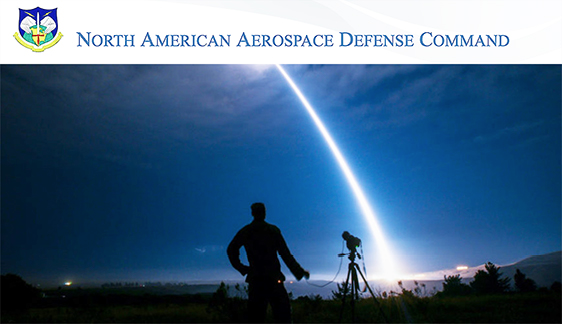
North American Aerospace Defense Command (NORAD) and U.S. Northern Command (NORTHCOM), in collaboration with all 11 U.S. combatant commands, have executed the third in a series of Global Information Dominance Experiments (GIDE), in partnership with the Joint Artificial Intelligence Center, the Undersecretary of Defense for Intelligence and Security’s Project Maven and with significant funding and manpower support from the Department of the Air Force’s Chief Architect Office.
These experiments use technology that is available today to enable decision makers to have relevant information sooner, thus creating decision space for senior leaders by providing proactive options. The series of GIDE events are technology risk reduction experiments that complement a shift in focus from pure defeat mechanisms toward earlier deter and deny actions well left of conflict, consistent with the Department of Defense’s prioritization of integrated deterrence.
Secretary of Defense Lloyd Austin recently said, “Integrated deterrence is about using the right mix of technology, operational concepts, and capabilities—all woven together in a networked way that is so credible, flexible, and formidable that it will give any adversary pause.”
The Global Information Dominance Experiment 3, or GIDE 3, was executed in three synchronized but distinct stages. Stage one focused on cost-effective data solutions to increase decision space through earlier indications and warnings (I&W). Stage two evaluated the ability to respond to contested logistics and demonstrated global collaboration to rapidly create deterrence options and dynamic contested logistics planning.
The final stage, stage three, demonstrated the Joint Artificial Intelligence Center’s Matchmaker capability for machine-enabled crisis deterrence and conflict defense options. This was tied to live representative threats and real-world assets allowing the participating organizations opportunities to exercise global integration.
“The GIDE 3 experiment showcased how the software tools designed for cross-combatant command collaboration, assessment, and decision-making can be used to enable more effective global logistics coordination, intelligence sharing and operations planning,” said Gen. Glen VanHerck, commander, NORAD and NORTHCOM. “By integrating more information from a global network of sensors and sources, using the power of AI and machine-learning techniques to identify the important trends within the data, and making both current and predictive information available to commanders, NORAD and USNORTHCOM are giving leaders around the globe more time to make decisions and choose the best options available, whether in competition, crisis or conflict.”
The first GIDE was held in December of 2020. During that experiment, NORAD and USNORTHCOM, in coordination with U.S. Southern Command, U.S. Indo-Pacific Command, U.S. Transportation Command, U.S. Strategic Command, and the Under Secretary of Defense for Intelligence and Security, convened a digital table-top exercise to prototype cross-combatant command collaboration using AI-enabled early warning alerts of peer-level threat movements.
GIDE Two (GIDE 2) was held in March of 2021. GIDE 2 expanded participation to include all combatant commands and the JAIC. The goals of the experiment were to gain a common understanding and picture of the threat for each of the combatant commanders; obtain earlier indications of adversary actions through artificial intelligence and machine-learning tools; and conduct cross-combatant command coordination on response actions, thereby obtaining faster decisions and ultimately, improving deterrence. GIDE 2 incorporated “live-fly” events that provided additional input into the experiment which demonstrated not only increased global integration and cross-combatant command collaboration, it also introduced machine-enabled response options and links to live Service-level data sets.
During GIDE 3, NORAD and U.S. Northern Command received support from the Department of the Air Force Chief Architect Office who conducted ADE 5, the CAO’s fifth in a series of Architecture Demonstration and Evaluation events that examine enterprise-wide architectures and their integration while facilitating information advantage and decision making superiority technology demonstrations to inform future architecture development. CAO provided significant funding and manpower resources to execute GIDE 3, enabling a much more robust real-world construct upon which to demonstrate and evaluate baseline architectures for the Services and DoD.
“Our nearly two-year experimentation partnership with NORAD and U.S. Northern Command on three of our five events has yielded tremendous progress in designing and evaluating and the technical architectures that enable our joint warfighters,” said Preston Dunlap, the Air and Space Forces’ Chief Architect. “We’re grateful to have willing and motivated partners like NORAD and U.S. Northern Command who are eager to get after the difficult decision superiority for strategic leadership challenges, all the way down to agile, distributed decision superiority at the edge problem sets that we tackled in GIDE 3 and ADE 5.”
NORAD and NORTHCOM continue learning from these experiments and are working with partners to initiate planning for the next experiment in are working with p the GIDE series.
Omnispace + Vulcan Wireless Demo Commercial SATCOM Connectivity With Portable Military Radios
Omnispace and Vulcan Wireless Inc. have announced successful voice and data communication between its NGSO on-orbit satellite and a widely fielded model of mobile tactical military communications radios (PRC- 117G), seamlessly uniting mobile and satellite to create the world’s truly global 5G mobile network.

As part of Omnispace’s Phase II Small Business Innovation and Research (SBIR) contract, the demonstration was in cooperation with U.S. Space Force’s Space Systems Command. The contract was awarded as part of the U.S. Airforce’s “Space Pitch Day,” enabling Omnispace to bring next-generation narrowband capabilities to the warfighter.
The Omnispace next-generation global 5G network is being architected to support “dual-use,” mission-critical enterprise and secure government applications. Unlike legacy commercial and government networks, Omnispace’s global system is being designed in line with 3GPP 5G NTN standards, which will enable interoperability for any compatible 5G commercial or government device.
Omnispace’s 5G NTN platform will further enhance government customers’ resiliency, reliability, and real-time decision-making by enabling advanced tactical handheld communications, military internet- of-things, and battlefield edge processing.
Together with Vulcan, the test successfully demonstrates the ability to connect the global Omnispace satellite network directly to existing mobile devices -- addressing warfighter needs “at the edge” within the joint all-domain command and control (JADC2) architecture.
Campbell Marshall, Omnispace’s Vice President for Government and International Markets, said, “This demo proves that software-defined mobile, tactical user equipment can leverage our dual-use commercial infrastructure. Imagine the possibilities that 5G technology will enable for government -- from COTM handheld devices to IoT platforms.”
The demonstrations with Vulcan Wireless were focused on connecting existing military hardware to satellites in commercial frequency bands and orbits, not traditionally used by government, to increase the resiliency of battlefield communications.
“The Vulcan wireless and Omnispace teams worked closely to successfully conduct a live demonstration, integrating existing tactical communication systems with the Omnispace satellite network,” said Kevin Lynaugh, CEO, Vulcan Wireless Inc.
Processor Intelligence For SpaceLink’s Spacecraft To Be Provided By SEAKR
SpaceLink has selected SEAKR Engineering, Inc. (SEAKR) to provide key payload technology for the firm’s relay satellite system.
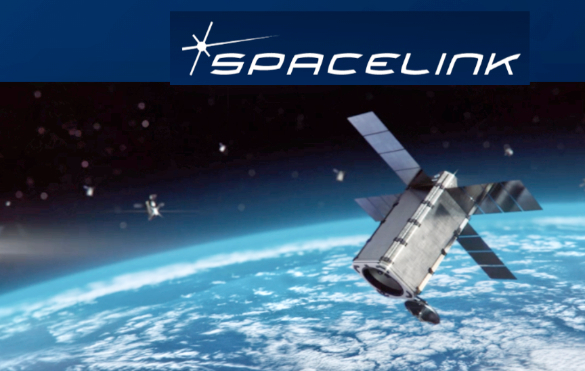
SEAKR is developing technologies for DARPA and the U.S. Space Force and will provide advanced on-board processing for the SpaceLink network (infographic below), which provides secure, continuous, high- capacity communications for time-critical service between spacecraft and the ground.
Working together with SpaceLink, SEAKR is developing an advanced, high-performance processor that integrates with optical and radio frequency (RF) signals. The processor on each of SpaceLink’s MEO satellites will control and direct data traffic to optimize the capacity and availability of the network in response to customer demand.
SEAKR, a firm that just agreed to a definitive acquisition by Raytheon Technologies, is a leading-edge provider of advanced electronics for space applications and is developing one of the central technologies for the Defense Advanced Research Projects Agency’s (DARPA’s) Blackjack satellite network.

The SpaceLink relay system, planned to launch in 2024, will provide operational connectivity to commercial and government space missions using both RF and optical links to the relay satellites and laser crosslinks to route traffic to any SpaceLink ground entry point, and on to the users’ Mission Operations Center. The system will support the growing bandwidth demand and security requirements of commercial, civil, and U.S. and allied national security missions.
With the growing space economy and proliferation of spacecraft in LEO, the demand for fast, continuous, high-capacity connectivity is accelerating. SpaceLink’s unique architecture and location in MEO means the satellite constellation always has direct line of sight to satellites, space stations, tugs and servicers in LEO, as well as to its dedicated Gateway Earth Stations. SpaceLink will relieve the bandwidth bottleneck for organizations that need to transport data quickly and securely to users anywhere in LEO or on Earth.
The SpaceLink relay network is designed to pick up where the U.S. Tracking and Data Relay Satellite System (TDRSS) leaves off and go beyond with unprecedented capacity that leverages today’s technology advances. Enhancing the business case for Earth Observation (EO) companies, commercial space stations, satellite servicers, and space tugs, SpaceLink also meets requirements for the U.S. Government and close allies that want to leverage industry solutions.
“SEAKR and SpaceLink are aligned in our strategic planning and technology roadmaps,” said Dave Bettinger, SpaceLink CEO. “SEAKR is fully compliant with U.S. government standards and cybersecurity requirements, and our processor development and production will be done on U.S. soil by U.S. persons. For critical payload components, we know this is important to many of our customers.”
”SEAKR has developed multiple on-orbit reconfigurable payloads for both commercial and military missions for multiple orbital domains. The SpaceLink satellite communication processor leverages decades of successful missions and will represent one of the most capable systems deployed,” said Dave Jungkind, SEAKR’s Vice President of Business Development.
“We share SpaceLink’s excitement about the prospects for a relay system that provides continuous connectivity for spacecraft in LEO,” said Scott Anderson, president and co-founder of SEAKR. “Our agreement with SpaceLink enables us to move forward with development of the advanced, high-performance processor that meets SpaceLink’s relay requirements. Our companies have great synergy and we are enthusiastic to move forward with all the technical requirements and interfaces.”
SEAKR Engineering, Inc. (SEAKR) is a leading supplier of space qualified state-of-the-art electronics for advanced processors, networked systems, reconfigurable radio frequency (RF) and electro-optical (EO) payloads, and digital channelizers/beamformers. These systems use SEAKR’s Radiation Hardened system By Design (RHBD) techniques that have successfully been deployed in over 300 missions with a 100% on-orbit success rate. SEAKR designs, builds, and tests these systems at their facilities in Colorado.
SpaceLink will help advance humanity to a new age of space commerce, exploration, environmental awareness, and security. The Always in Sight™ data relay system provides global coverage to empower space system operators to maximize use of their assets. SpaceLink Corporation is headquartered in the Washington DC area and has offices in Silicon Valley, California. It is a wholly owned subsidiary of Electro Optic Systems Holdings Limited, a public company traded on the Australian stock exchange.
These communications capabilities are the cornerstone for next- generation warfighting concepts such as multi-domain operations (MDO) and expeditionary advanced based operations (EABO) which are focused and expeditionary advanced based operati on minimizing physical and RF signatures.
AFRL Invites New Science, Technology Ideas Through Air Force, Space Force Tech Connect Author: Bryan Ripple, Air Force Research Laboratory Public Affairs
On behalf of the Department of the Air Force, as one laboratory supporting two services, the Air Force Research Laboratory has developed the Air and Space Forces Science & Technology Front Door, to connect potential partners with S&T experts and opportunities. The Department recognizes that innovative ideas often come from small businesses, industry, academia, or even a project in your neighbor’s garage that can help solve problems the department has identified.

Everybody has ideas. Many people have had an idea for a new product or technology only to have it dismissed or neglected. Sometimes we later find that others had the same idea, but were able to get it in front of the right people, resulting in their product on the market, not ours.
Ideas are relatively easy to come by; inventions and innovations are more difficult. It takes knowledge, time, money and effort to refine an idea into a workable solution, even on paper. There are formidable tasks and substantial barriers in the path of those who pursue innovation. Accomplishing these tasks and overcoming the barriers typically requires much careful planning and input from others.
The Department of the Air Force recognizes that innovative ideas often come from small businesses, industry, academia, or even a project in your neighbor’s garage that can help solve problems the Department has identified. In April of 2019, the Air Force announced its Science and Technology 2030 Strategy which lays a path forward for the U.S. Air Force science and technology ecosystem to rapidly develop warfighting capabilities.
By expanding and strengthening our partnerships, and leveraging the innovation networks within industry, small business, academia, and government laboratories, the Department is committed to delivering an effective service to connect that will ensure more external innovations have a transformational impact on the Air Force and Space Force. On behalf of the Department, as one laboratory supporting two services, the Air Force Research Laboratory has developed the Air and Space Forces Science & Technology (S&T) Front Door, to connect potential partners with S&T experts and opportunities.
Partnering or connecting with the DAF science and technology enterprise can be challenging due to its structure and various platforms of engagement. The Air Force and Space Force Tech Connect website was built to help address this and support S&T ecosystem awareness, learning, engagement and unsolicited idea submission intake. The website provides access to current S&T opportunities, S&T events and other S&T enterprise connectors. It also provides innovators a portal where they can share their ideas and capabilities with an AFRL subject matter expert for potential feedback, collaborations and opportunities.
With a nationwide scope to invite and nurture game-changing ideas and technology that might come from anywhere and anyone that can ultimately benefit the warfighter, the S&T Front Door’s long-term goal is to expand the science and technology ecosystem involvement beyond AFRL to include more mission-aligned organizations and organizations of the larger Department of Defense science and technology network.
Another partnering S&T entity, and also part of the AFRL team, AFWERX is expanding technology, talent and transition partnerships for rapid and affordable commercial and military capability through three efforts: AFVentures, Spark and Prime. AFVentures, which is AFWERX’s commercial investment arm for the Air Force, creates simple pathways for commercial innovators and private capital investment to help the Department of the Air Force solve problems. Spark connects Airmen and Guardians to commercial innovators while Prime is all about accelerating emerging commercial markets using military missions and equities. Both Tech Connect and AFWERX are committed to exploring viable solutions and partnerships to further strengthen both our air and space forces and aim to make connecting potential partners with S&T experts and opportunities easier than before.
“The National Defense Strategy forecasts a highly-contested future fight with complex threats,” said Maj. Gen. Heather Pringle, AFRL commander. “Peer competitors are driving to overtake the United States as the science and technology superpower. The global commercial sector is outpacing our investment in S&T and exploding with innovative technologies. Nonetheless, we remain clear-eyed about the challenges ahead.
“With the complexity of this evolving landscape, we accelerate change in line with the Air Force chief of staff’s charge to us. We accept appropriate levels of risk in innovation and experimentation, as the chief of space operations urges. Above all, we recognize technological superiority is necessary to address these challenges. By expanding our presence and creating more visible and convenient virtual front doors, we are cultivating a world-wide ecosystem of research from basic to applied that drives the pace of technology and competition in the agile pursuit of innovative solutions for Warfighters and stakeholders alike,” she said.
The Air Force and Space Force Tech Connect team, currently comprised of subject matter experts from AFRL’s technology directorates, the Small Business Innovation Research/Small Business Technology Transfer program, Strategic Development Planning and Experimentation Office, Transformational Capabilities Office and AFWERX, reviews and connects quality, relevant submissions with S&T subject matter experts and S&T opportunities. The team provides feedback and if the submission is relevant, establishes dialogue with interested Air Force S&T programs.
If you are an innovator with promising ideas and are interested in collaborating with the Department of the Air Force on science and technology innovation and development, then the Air Force and Space technology innovation and development, then the A Force Tech Connect team wants to hear from you.
Boeing To Build The First Operational, Carrier-Based, Unmanned Aircraft For The U.S. Navy
Boeing [NYSE: BA] will build the Navy’s newest carrier-based aircraft at a new high-tech facility in Illinois, bringing the benefits of digital aircraft design and production to the Navy and as many as 300 advanced manufacturing jobs to the greater St. Louis region.
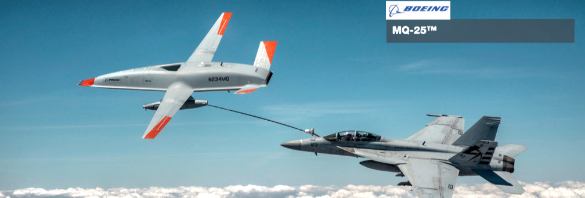
The new 300,000 square-foot facility at MidAmerica St. Louis Airport, scheduled for completion in 2024, initially will employ approximately 150 mechanics, engineers and support staff who will build the MQ-25™ Stingray™, the Navy’s first operational, carrier-based unmanned aircraft. Employment could reach up to 300 with additional orders.
Boeing digitally engineered the entire MQ-25 aircraft and its systems, resulting in high-fidelity models that are used to drive quality, efficiency and flexibility throughout the production and sustainment process. The new MQ-25 facility will include state-of-the-art manufacturing processes and tools, including robotic automation and advanced assembly techniques, to improve product quality and employee ergonomics.
“The team and state-of-the-art technology we’re bringing to the Navy’s MQ-25 program is unprecedented, and we’re incredibly proud to be expanding both as we build the future of autonomous systems in Illinois,” said Kristin Robertson, vice president and general manager of Autonomous Systems, Boeing Defense, Space & Security. “We’ve received great support from MidAmerica Airport and countless dedicated employees, and we’re excited to build the Navy’s first operational, carrier- based unmanned aircraft right here in the Metro East.”
For two years, Boeing and the Navy have been flight testing the Boeing- owned MQ-25 test asset from MidAmerica Airport, where in recent history-making missions T1 has refueled an F/A-18 Super Hornet, an E-2D Hawkeye and an F-35C Lightning II.
The U.S. Navy intends to procure more than 70 MQ-25 aircraft to help extend the range of the carrier air wing, and the majority of those will be built in the new facility. Boeing is currently producing the first seven MQ-25 aircraft, plus two ground test articles, at its St. Louis facilities, and they will be transported to MidAmerica for flight test. The MQ-25 program office, including its core engineering team, will remain based in St. Louis.
The new MQ-25 facility will be in addition to existing manufacturing operations at Boeing St. Clair, which produces components for the CH- 47 Chinook, F/A-18 Super Hornet, F-15 and other defense products. Telespazio Selects Hughes HeloSat for Airborne Satellite Communications Hughes Network Systems, LLC (HUGHES) has announced that Telespazio, a joint venture between Leonardo (67%) and Thales (33%), has selected the Hughes HeloSat™ solution for satellite communications (SATCOM) for Leonardo’s helicopters.
The solution combines the Hughes HM100 gateway and the HM40 modem for SATCOM on-the-move with technical support and systems integration. Once installed on helicopters like the Leonardo SW-4 Solo optionally piloted / rotorcraft uncrewed system, HeloSat will enable connectivity through-the-rotor using the Athena-Fidus Ka-band satellite capacity via the Telespazio ground station in Fucino, Italy.
Telespazio Selects Hughes HeloSat for Airborne Satellite Communications
Hughes Network Systems, LLC (HUGHES) has announced that Telespazio, a joint venture between Leonardo (67%) and Thales (33%), has selected the Hughes HeloSat™ solution for satellite communications (SATCOM) for Leonardo’s helicopters.
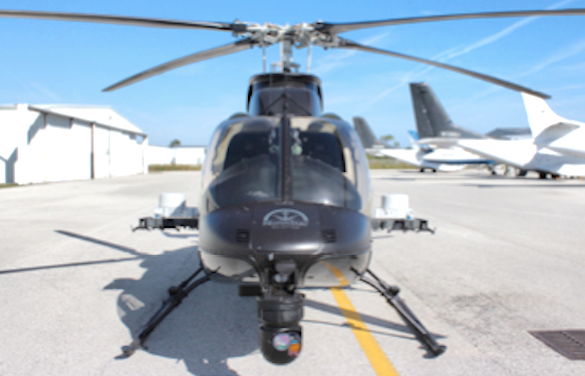
The solution combines the Hughes HM100 gateway and the HM40 modem for SATCOM on-the-move with technical support and systems integration. Once installed on helicopters like the Leonardo SW-4 Solo optionally piloted / rotorcraft uncrewed system, HeloSat will enable connectivity through-the-rotor using the Athena-Fidus Ka-band satellite capacity via the Telespazio ground station in Fucino, Italy.
“Building on a decades-long collaboration with Telespazio, last year we demonstrated our HeloSat technology with no packet loss through the blades of a Leonardo AW139
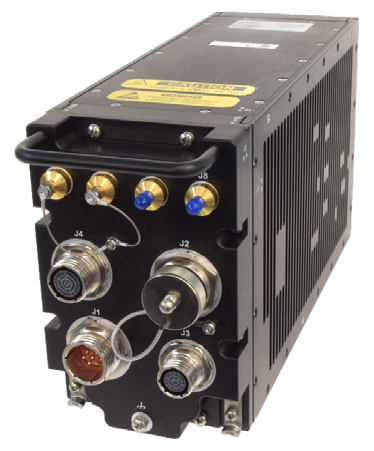
helicopter; now we are delivering a turnkey solution,” said Rick Lober, vice president and general manager, Hughes Defense. “With low size, weight and power, HeloSat is the only reliable, validated, wideband Beyond-Line-of-Sight SATCOM capability for helicopters to transmit uninterrupted, full-motion video in real-time.
“For the fixed-wing and rotary-wing avionics market, Telespazio has chosen to create a technological team of companies with the best solutions on the market. The approach is to solve all the issues related to an avionic satellite solution by providing: teleport services, on-board technologies, ground technologies and space capacity on satellites most suited to the proposal.”
When we looked for connectivity under the rotor, we turned to our strategic partner Hughes for the proof of concept, and we found an excellent solution that we can’t wait to bring to market,” said Alessandro Caranci, vice president and head of Satcom Line of Business, Telespazio. “Hughes technology, advanced waveform and in-flight experience deliver multi-megabit-per-second speeds through rotary blades without packet loss – a competitive advantage for military and commercial helicopter applications.”
NILE Block Cycle 9 Interoperability Testing Successfully Completed By Leonardo DRS Link-22 Signal Processing Controller
Leonardo DRS has successfully completed formal interoperability testing of its Link-22 Signal Processing Controller (SPC) within the NATO Improved Link Eleven (NILE) Link-22 Network.
Compliance with this standard allows Leonardo DRS to provide world- class production of the technology and full interoperability with all NATO and allied partners supporting operations and exercises in the INDOPACOM theater.
Leonardo DRS worked closely with the NILE team to successfully complete all cycles and posture for future advancements. The success illustrates that Leonardo DRS SPCs are compliant with Link-22 Block Cycle 9 specifications for current and emerging mission requirements for users around the world.
Link-22 tactical datalinks are used by the U.S. military and other allied military forces to increase joint and coalition communications in the surface, sub-surface, land, and air domains by providing unprecedented situational awareness across the battle space. It is the primary means to exchange data, including radar tracking information beyond line of sight.
With more than 40 years of tactical datalink experience, 1,100 Link- 22-capable SPCs and more than 3,000 Link-11 Data Terminal Sets delivered, deployed, and on order, military services around the globe depend on Leonardo DRS for beyond-line-of-sight communications guaranteeing interoperability across domains, platforms, and nations.
Leonardo DRS’ Link-22 SPC solution is well-positioned for current missions and is primed to accept additional missions due to its abundance of spare memory and additional processing power. Using next generation hardware and software architecture, coupled with software-defined radio (SDR) and software-defined modem technologies, the company is able to offer enhanced capabilities while retaining the look, feel, and operational reliability to which the world’s operators have grown accustomed. As the trusted supplier of tactical datalink solutions, Leonardo DRS has established itself to deliver leading edge technology to meet customers’ requirements and to support their products for decades after delivery.
Leonardo DRS’ commonality across hardware and software ensures interoperability between nations during times of long range secured SATCOM, as well as HF/UHF encrypted communications during time of SATCOM-denied operations. With additional, advanced HF waveforms, this solution can expand upon the capabilities inherently found in Link-22.
Larry Ezell, Senior Vice President and General Manager of the Leonardo DRS Airborne and Intelligence Systems business. “These systems are positioned for current and emerging mission requirements and the signal processor controllers ensure U.S. and allied forces have the best long- processor controllers ensure U.S. and allied forces have th haul communications and situational awareness possible.”
Viasat Receives Two DoD Contracts For Battlespace 5G Implementation
Viasat Inc. (NASDAQ: VSAT) has received two awards from the U.S. Department of Defense (DoD) through the Information Warfare Research Project (IWRP) to conduct research that will examine the use and implementation of 5G networks on the battlespace. These awards are part of the DoD $600 million 5G research initiative announced last year to explore how 5G technology can strengthen warfighting capabilities.

Viasat is working with the DoD to solve complex communications problems across multiple network domains—from satellite to cellular to government specific networking waveforms.
Specific to these contracts, Viasat will tap into its 5G wireless, networking and cybersecurity expertise and help the DoD understand how it can best use 5G technology to enable multi-domain operations in future joint warfighting programs, including Joint All-Domain Command and Control (JADC2) capabilities.

The awards focus on two areas:
– Improving Command and Control (C2) applications and services: Viasat will provide C2 hardware packages that support Command, Control, Communications, Computers, Intelligence, Surveillance and Reconnaissance (C4ISR), networking and cybersecurity software, and integrate those capabilities into tactical networks using 5G to improve visibility across the battlespace. Viasat will also explore how 5G connectivity can support bandwidth-intensive applications (e.g. ISR mapping), be leveraged to share real-time situational awareness information and be used to provide resilient cloud access to the battlefield.
– 5G enhanced network deployment for Agile Combat Employment (ACE) operations in contested environments: Viasat will look at rapid configuration and deployment of secure 5G nodes at the tactical edge that could be required when operating in unknown battlezones. Viasat’s research will focus on understanding of configurations and capabilities for enterprise orchestration and management (how to route network data); tactical network dimensioning and planning (how to optimize network/RF planning tools); and Low Probability of Intercept/Low Probability of Detection (LPI/LPD) capabilities (how to prevent adversaries from finding the network).
For these research experiments, which will be conducted over three years, Viasat aims to use its Expeditionary Lightweight Integrated Tactical Edge (ELITE) Kit solution with a 5G gateway to support the C2 application experiments, as well as its System Integration Lab (SIL) to establish an emulation environment for network dimensioning, planning and radio access network modeling.
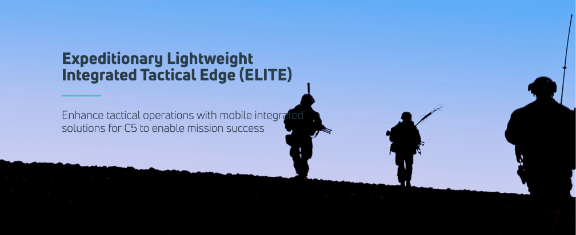
Additionally, Viasat’s NetAgility™ product will offer the DoD multi-path transport and network management support. Viasat will also create a 5G digital twin model to test rapid network configuration and modification, and use 5G millimeter wave and Free Space Optics links to deliver high bandwidth needs.
“With 5G networks spreading globally and adversaries investing heavily in this capability, it is critical for the U.S. and its allies to understand and explore the potential of 5G technology in supporting warfighting operations,” said Craig Miller, president, Viasat Government Systems. “The rapid transport of information and data across domains is critical to advancing multi-domain operations and enabling joint force operations.
Enhanced 5G bandwidth and connectivity for bases and mobile platforms at the tactical edge can offer commanders greater visibility to enhance at the tactical edge can offer commanders greater visibility to enhanc C2 operations and increase situational awareness for the warfighter.”



